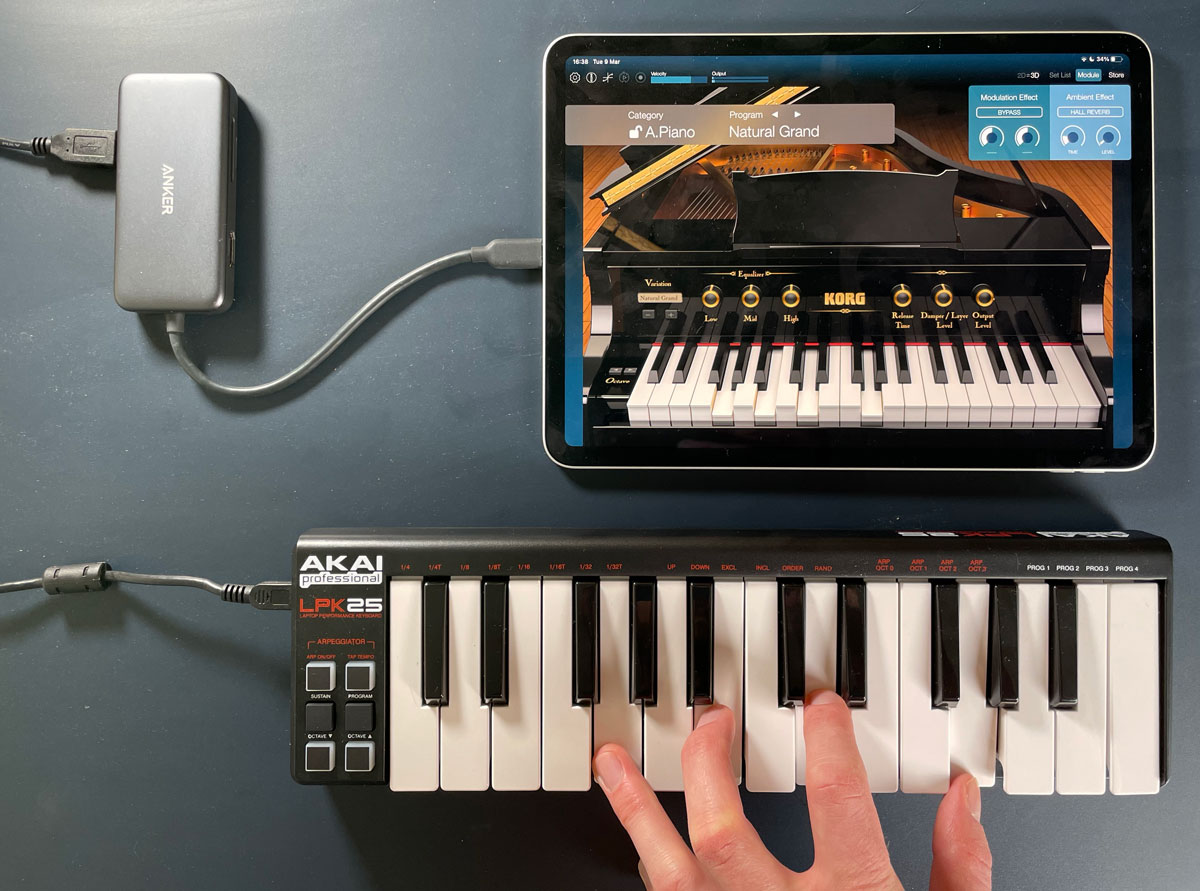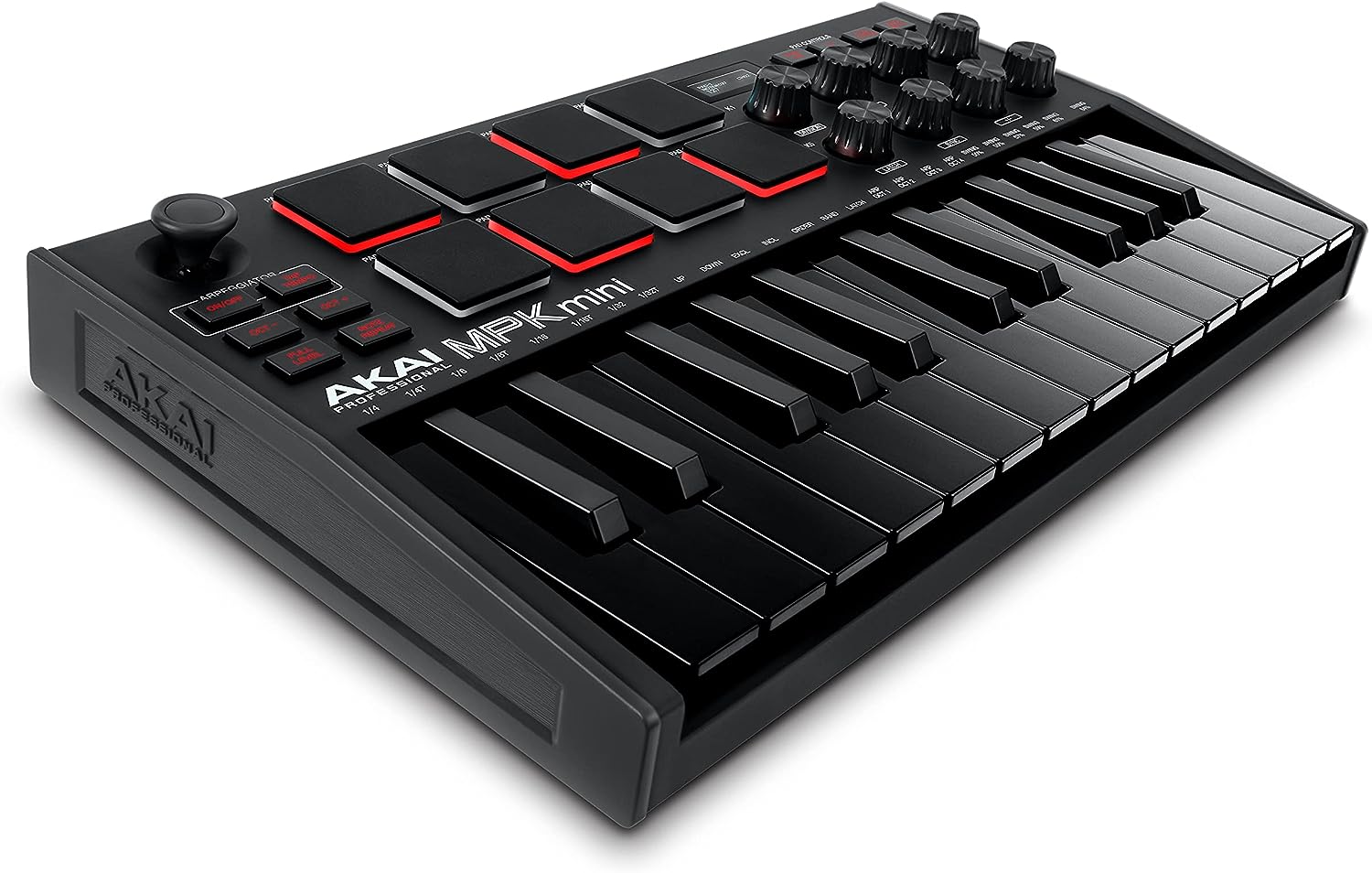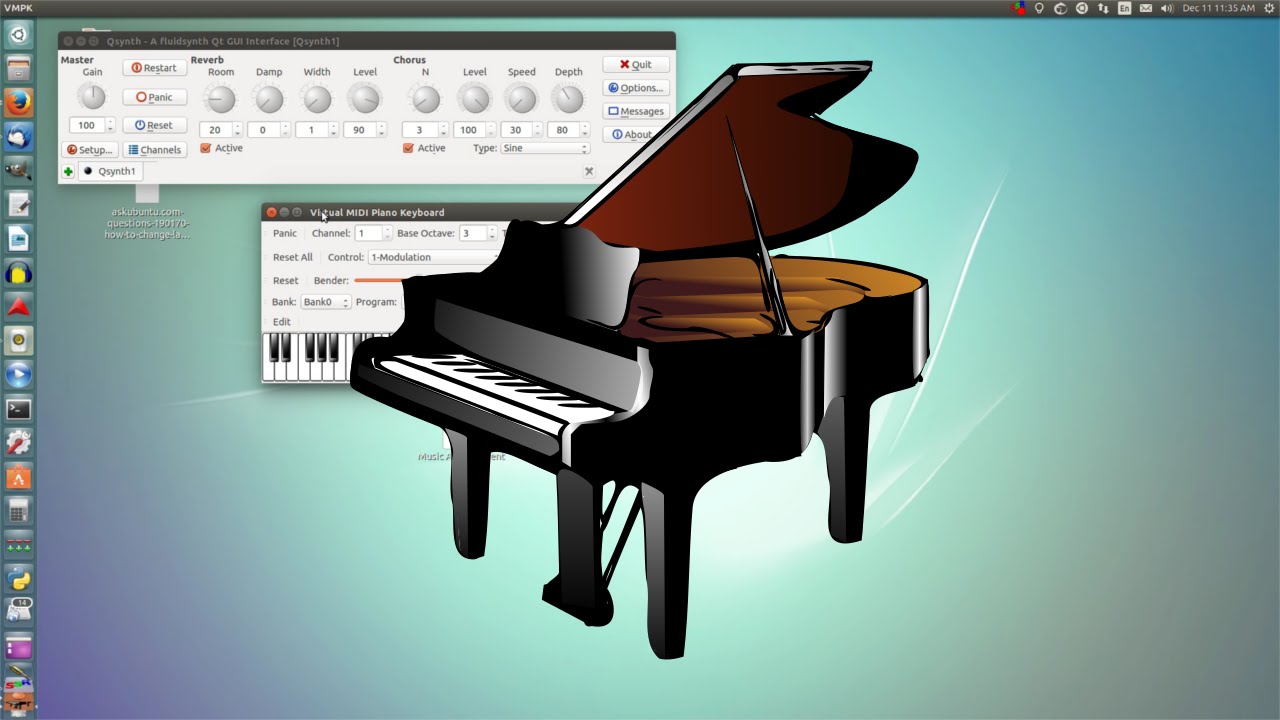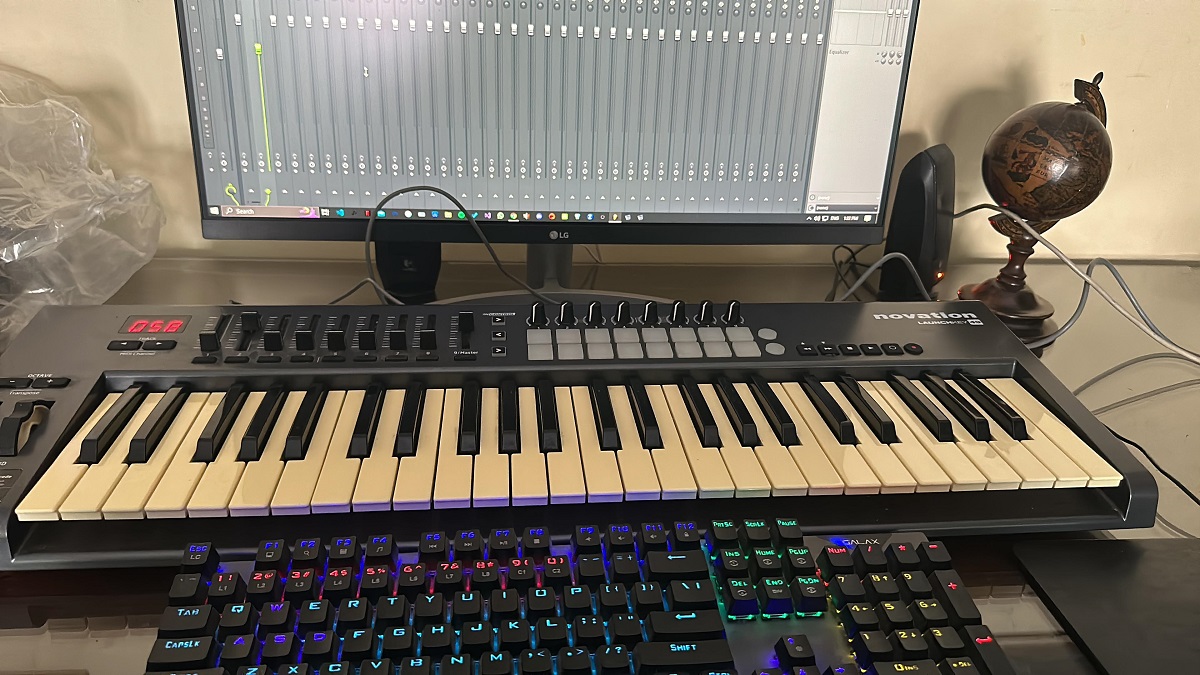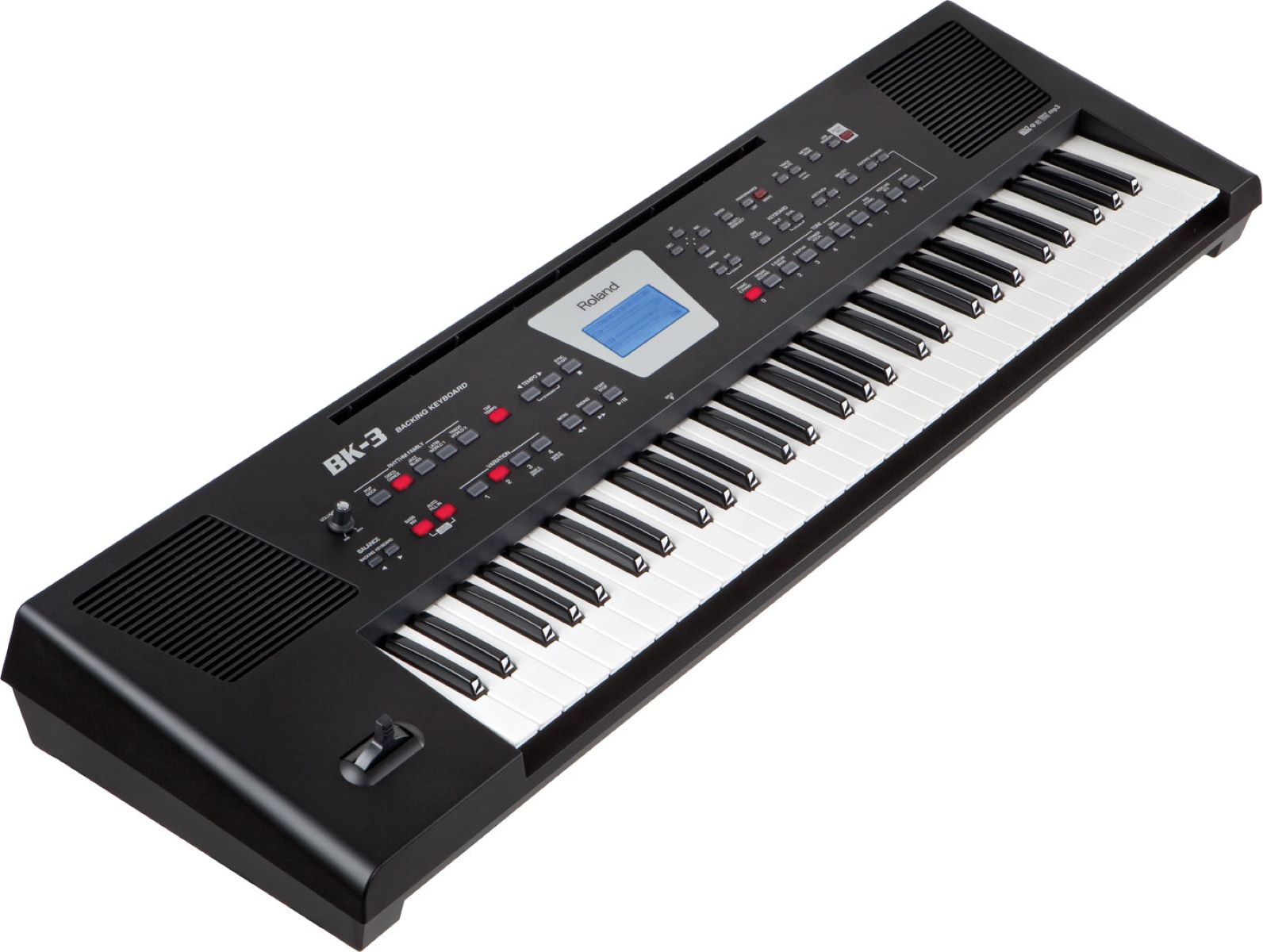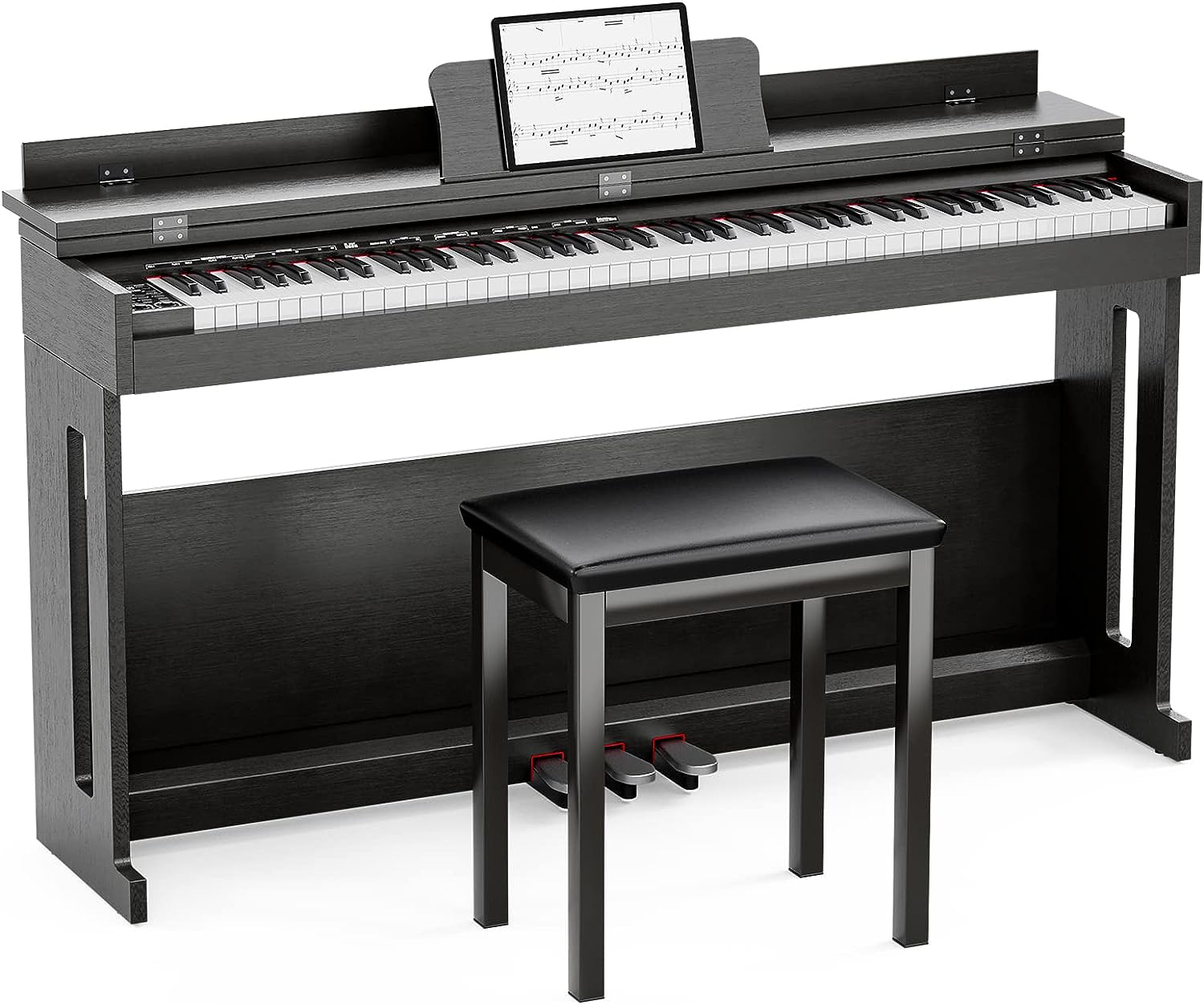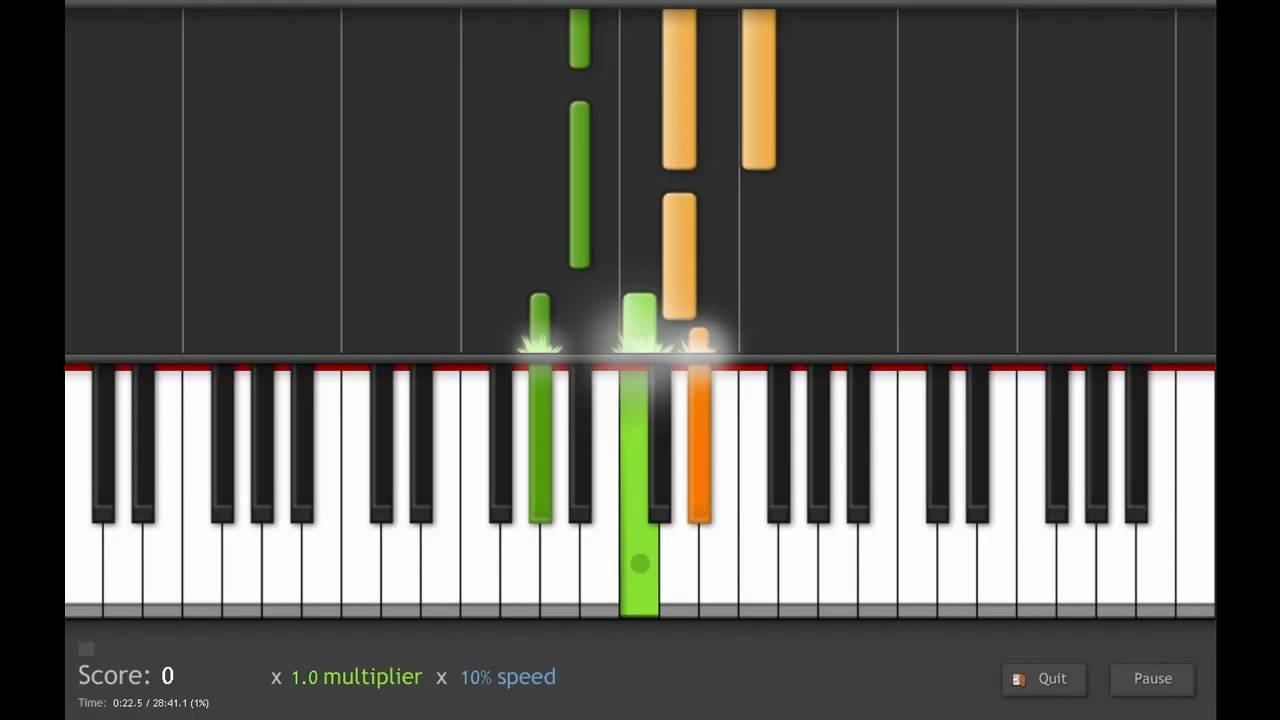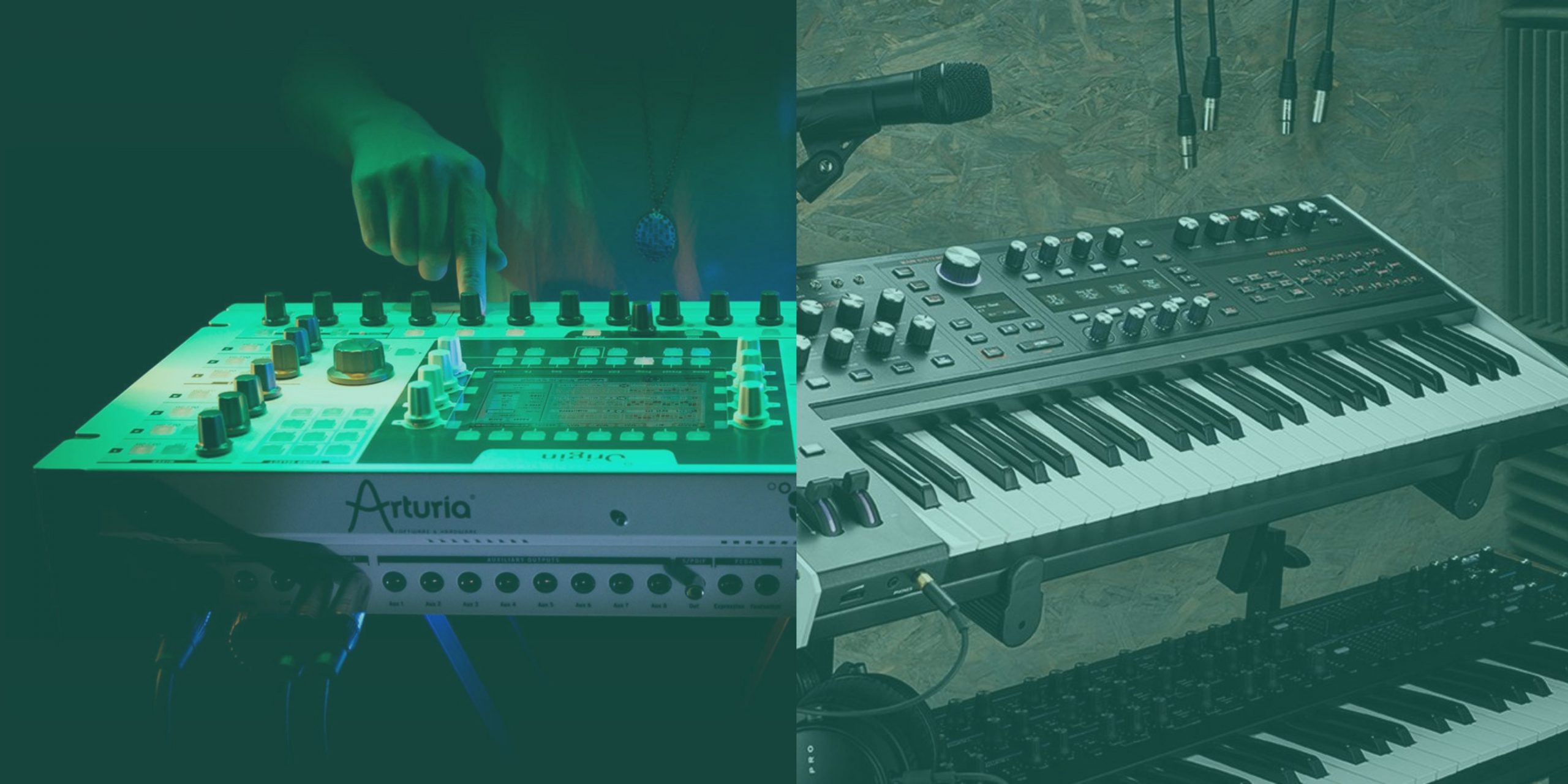Introduction
Are you passionate about music and eager to learn how to play the piano? Perhaps you have a MIDI keyboard and are wondering how to make the most of its capabilities for piano playing and music production. A MIDI (Musical Instrument Digital Interface) keyboard is a versatile tool that allows you to explore the world of piano playing in a digital environment. Whether you're a beginner seeking to learn basic piano techniques or an aspiring music producer looking to harness the potential of a MIDI keyboard, this guide will walk you through the essential steps to get started.
Playing the piano with a MIDI keyboard offers a dynamic and interactive experience, enabling you to express your musical creativity in diverse ways. With the right software and setup, you can seamlessly integrate your MIDI keyboard into your computer-based music production workflow. Moreover, the MIDI keyboard serves as a bridge between traditional piano playing and modern digital music creation, opening up a world of possibilities for musicians and producers.
In this comprehensive guide, you will learn how to connect your MIDI keyboard to your computer, select suitable software for piano playing and music production, and set up your MIDI keyboard within the chosen software. Additionally, you will discover fundamental piano techniques that can be practiced and mastered using a MIDI keyboard. Furthermore, you will explore the exciting realm of music production with a MIDI keyboard, uncovering its potential for creating original compositions and enhancing your musical projects.
Whether you aspire to become a proficient pianist or a skilled music producer, the journey of playing piano with a MIDI keyboard is filled with exploration, learning, and creativity. By delving into the following sections, you will gain the knowledge and confidence to embark on this enriching musical endeavor. Let's dive into the world of MIDI keyboards and unlock the boundless possibilities they offer for playing the piano and producing music.
Getting Started with a MIDI Keyboard
Before delving into the realm of playing piano with a MIDI keyboard, it’s essential to familiarize yourself with the basic components and functionalities of this versatile instrument. A MIDI keyboard, also known as a MIDI controller, is a piano-style electronic musical keyboard that transmits MIDI data to external devices, such as computers or synthesizers. Unlike traditional pianos, MIDI keyboards do not produce sound on their own; instead, they serve as input devices for triggering and controlling sounds in software or hardware.
When embarking on your journey with a MIDI keyboard, it’s crucial to understand its features, including the keys, knobs, sliders, and pads. Most MIDI keyboards feature velocity-sensitive keys, allowing for expressive and nuanced playing, akin to an acoustic piano. Additionally, they often incorporate assignable knobs and sliders that can be customized to manipulate various parameters within music production software.
To begin your adventure with a MIDI keyboard, familiarize yourself with its connectivity options. Most MIDI keyboards can be connected to a computer via USB, enabling seamless communication between the keyboard and music production software. Some advanced models may also offer MIDI ports for connecting to external MIDI-compatible devices.
Exploring the range of features and connectivity options of your MIDI keyboard sets the stage for an immersive and personalized musical experience. Whether you’re drawn to the expressive capabilities of the keys or eager to experiment with the assignable controls, getting acquainted with your MIDI keyboard is the first step toward unlocking its full potential.
As you embark on this musical journey, keep in mind that a MIDI keyboard is not solely a tool for piano playing; it serves as a versatile platform for music creation and performance. Embrace the creative possibilities that your MIDI keyboard offers, and prepare to embark on a fulfilling and enriching exploration of music and technology.
Connecting Your MIDI Keyboard to Your Computer
Connecting your MIDI keyboard to your computer is a pivotal step in harnessing its potential for piano playing and music production. The seamless integration of the MIDI keyboard with your computer opens up a world of creative possibilities, allowing you to explore a myriad of sounds and techniques within digital audio workstations (DAWs) and music production software.
The most common method of connecting a MIDI keyboard to a computer is through a USB cable. Many modern MIDI keyboards feature USB connectivity, enabling plug-and-play functionality with computers running various operating systems. Upon connecting the MIDI keyboard to your computer via USB, the necessary drivers are often installed automatically, ensuring swift and hassle-free setup.
For MIDI keyboards that do not have USB connectivity, MIDI ports can be utilized to establish a connection with the computer. These MIDI ports, typically labeled as MIDI In and MIDI Out, facilitate communication between the keyboard and the computer’s MIDI interface or external MIDI devices. In such cases, a MIDI-to-USB interface can be employed to bridge the connection between the keyboard’s MIDI ports and the computer’s USB port.
Once the MIDI keyboard is successfully connected to the computer, it becomes an integral part of your music production setup. It serves as a tactile and expressive interface for triggering virtual instruments, recording MIDI data, and controlling various parameters within your chosen software. This seamless integration empowers you to unleash your creativity and explore the boundless potential of piano playing and music production with a MIDI keyboard.
As you establish the connection between your MIDI keyboard and computer, take a moment to ensure that the necessary drivers and software updates are in place. This proactive approach ensures optimal performance and compatibility, allowing you to focus on honing your piano skills and crafting captivating musical compositions.
With the MIDI keyboard seamlessly connected to your computer, you are poised to embark on a captivating musical journey, delving into the art of piano playing and leveraging the innovative capabilities of music production software. The fusion of traditional piano techniques and modern technology awaits, inviting you to explore, create, and immerse yourself in the captivating realm of music.
Choosing the Right Software
When venturing into the world of piano playing and music production with a MIDI keyboard, selecting the appropriate software is paramount to realizing your creative vision. The software you choose serves as the digital canvas upon which you will explore piano techniques, craft musical compositions, and unleash your artistic expression. Whether you aim to emulate the rich timbre of acoustic pianos or delve into the realm of electronic music production, the right software will be instrumental in shaping your musical journey.
For those focused on honing their piano skills, choosing a digital audio workstation (DAW) with robust piano sound libraries and expressive capabilities is essential. DAWs such as Ableton Live, Logic Pro, and FL Studio offer an extensive range of high-quality piano samples and virtual instruments, enabling you to emulate the nuances of acoustic pianos and explore diverse playing styles with your MIDI keyboard.
Alternatively, if your musical aspirations extend beyond traditional piano playing, you may opt for software synthesizers and samplers that cater to electronic music production. Synthesizer plugins such as Native Instruments’ Massive, Xfer Records’ Serum, and Arturia’s V Collection provide a wealth of sonic possibilities, allowing you to sculpt captivating sounds and textures using your MIDI keyboard as a versatile controller.
Furthermore, the integration of MIDI keyboard-specific software, such as Synthesia and Playground Sessions, can enhance your learning experience by offering interactive tutorials, visual feedback, and customizable practice sessions. These applications are tailored to support aspiring pianists in their journey toward mastering essential techniques and expanding their repertoire.
It’s important to consider the user interface, workflow efficiency, and compatibility of the software with your MIDI keyboard and computer setup. Additionally, exploring demo versions and user reviews can provide valuable insights into the features, performance, and user experience of various software options, aiding you in making an informed decision that aligns with your musical aspirations.
By selecting the right software that resonates with your creative ambitions and technical requirements, you pave the way for a seamless and inspiring musical experience. Whether you’re drawn to the expressive depth of acoustic pianos, the sonic palette of electronic music, or the interactive learning tools for piano mastery, the software you choose will be a catalyst for your artistic growth and musical exploration.
Setting Up Your MIDI Keyboard in the Software
Once you have chosen the software that aligns with your musical goals, it’s time to seamlessly integrate your MIDI keyboard into the digital environment. Setting up your MIDI keyboard in the software involves configuring its parameters, establishing communication protocols, and customizing its functionality to suit your playing style and production workflow. This pivotal step ensures that your MIDI keyboard becomes a responsive and expressive instrument within the software, empowering you to unleash your creativity and musical ideas.
The first step in setting up your MIDI keyboard is to ensure that it is recognized by the software. Upon connecting your MIDI keyboard to your computer and launching the chosen software, you may need to access the software’s preferences or settings menu to designate the MIDI keyboard as a controller input. This process typically involves selecting the MIDI keyboard from a list of available devices and enabling it for input and output within the software.
Once the MIDI keyboard is recognized by the software, it’s essential to configure its MIDI mapping and assignment. This entails assigning specific functions, such as note triggering, modulation, pitch bend, and control changes, to the various keys, knobs, sliders, and pads on your MIDI keyboard. Many software applications offer intuitive MIDI mapping interfaces, allowing you to visually map the MIDI keyboard’s controls to the desired parameters within the software.
Furthermore, some software platforms provide preset configurations tailored to popular MIDI keyboard models, streamlining the setup process and ensuring seamless compatibility. These presets may encompass predefined mappings for common functions, instrument articulations, and performance controls, enabling you to start playing and producing music with minimal configuration overhead.
As you delve deeper into the software’s settings, you may encounter options for customizing velocity curves, key ranges, and aftertouch sensitivity to match the response of your MIDI keyboard to your playing dynamics. Fine-tuning these parameters ensures that your MIDI keyboard accurately translates your expressive nuances into the digital realm, facilitating emotive and nuanced performances.
Moreover, exploring the software’s MIDI learn functionality allows you to dynamically assign and adjust control parameters in real time, fostering an interactive and personalized playing experience. This feature empowers you to adapt the MIDI keyboard’s controls to suit specific performance or production requirements, providing flexibility and creative freedom.
By meticulously setting up your MIDI keyboard in the software, you establish a symbiotic relationship between the physical instrument and the digital platform, creating a seamless and responsive interface for musical expression. This integration sets the stage for immersive piano playing, intricate sound design, and dynamic music production, empowering you to harness the full potential of your MIDI keyboard within the digital landscape.
Learning Basic Piano Techniques with a MIDI Keyboard
Embarking on a journey to master basic piano techniques with a MIDI keyboard opens a world of expressive possibilities and musical exploration. Whether you are a novice seeking to learn foundational skills or an experienced pianist transitioning to the digital realm, the MIDI keyboard serves as a versatile platform for honing your craft and delving into the art of piano playing.
One of the fundamental techniques to master when learning to play the piano with a MIDI keyboard is proper hand positioning and finger placement. Familiarize yourself with the ergonomic layout of the keys and adopt a relaxed yet poised posture to facilitate fluid and precise movements across the keyboard. Paying attention to hand positioning sets the stage for comfortable and efficient playing, enabling you to navigate scales, chords, and melodies with ease.
Developing a keen sense of touch and dynamics is essential for imbuing your performances with expressiveness and emotion. The velocity-sensitive keys of a MIDI keyboard respond to the force and speed of your keystrokes, allowing for nuanced and dynamic playing. Practice varying the pressure and speed of your key presses to explore the full spectrum of musical expression, from delicate pianissimo passages to thunderous fortissimo phrases.
Understanding music theory concepts, such as scales, chords, and arpeggios, is pivotal for building a strong foundation in piano playing. With a MIDI keyboard, you can visually and aurally grasp these theoretical elements through interactive visual feedback provided by the software. Many applications offer scale and chord visualization tools, enabling you to see and hear the harmonic relationships as you play, facilitating a deeper understanding of musical structures.
Exploring the diverse playing styles and articulations available on a MIDI keyboard enriches your musical vocabulary and versatility. Experiment with legato, staccato, and sustain techniques to imbue your performances with distinct character and phrasing. The tactile nature of the MIDI keyboard allows for seamless transitions between different articulations, fostering a dynamic and engaging playing experience.
Furthermore, leveraging the MIDI keyboard’s capabilities for polyphonic playing and multi-timbral control expands your horizons as a pianist. Delve into the intricacies of playing multiple voices simultaneously, experimenting with layering sounds, and exploring the rich textures achievable through polyphonic expression. These explorations cultivate a deeper appreciation for the complexities of piano music and enhance your ability to convey intricate musical ideas.
As you immerse yourself in learning basic piano techniques with a MIDI keyboard, embrace the interactive nature of the instrument and software integration. Engage with interactive tutorials, virtual instructors, and visual aids provided by MIDI keyboard-specific software to reinforce your learning and practice sessions. These resources offer valuable guidance and feedback, nurturing your growth as a pianist within the digital realm.
By mastering basic piano techniques with a MIDI keyboard, you lay a solid groundwork for expressive and captivating performances, paving the way for further exploration and artistic development. The MIDI keyboard serves as a dynamic canvas for cultivating your musical skills, fostering creativity, and igniting a passion for piano playing that transcends traditional boundaries.
Using MIDI Keyboard for Music Production
Integrating a MIDI keyboard into the realm of music production unlocks a wealth of creative possibilities, enabling you to shape and sculpt musical ideas with intuitive control and expressive finesse. Whether you aspire to compose intricate melodies, craft compelling harmonies, or design intricate soundscapes, the MIDI keyboard serves as a versatile tool for translating your artistic vision into captivating musical productions.
One of the primary advantages of using a MIDI keyboard for music production is its role as a tactile and expressive input device for triggering virtual instruments and manipulating sound parameters. With the ability to play and record MIDI data directly into digital audio workstations (DAWs), the MIDI keyboard offers a hands-on approach to composing melodies, harmonies, and rhythmic patterns, fostering a fluid and organic creative process.
Moreover, the integration of MIDI keyboard-specific software instruments, such as virtual pianos, synthesizers, and orchestral libraries, expands your sonic palette and empowers you to explore diverse musical genres and styles. The expressive capabilities of the MIDI keyboard, coupled with the vast array of virtual instruments available, facilitate the creation of rich and evocative musical arrangements, elevating your productions to new heights.
Utilizing the MIDI keyboard for music production extends beyond traditional piano playing, encompassing the realm of dynamic performance and real-time control. The assignable knobs, sliders, and pads on the MIDI keyboard serve as versatile tools for modulating sound parameters, automating effects, and shaping the sonic characteristics of your compositions. This hands-on approach to sound design and manipulation imbues your productions with a sense of immediacy and creativity, fostering an immersive and engaging music-making experience.
Exploring the intricacies of MIDI keyboard performance and production techniques, such as layering multiple instrument tracks, recording expressive MIDI performances, and leveraging dynamic control features, enriches your compositions with depth and emotion. The MIDI keyboard’s ability to capture the nuances of your playing, from subtle phrasing variations to intricate articulations, adds a human touch to your productions, infusing them with authenticity and character.
Furthermore, the MIDI keyboard serves as a versatile tool for creating and triggering rhythmic elements within your productions. Whether you’re crafting drum patterns, programming intricate arpeggios, or triggering percussive samples, the tactile interface of the MIDI keyboard facilitates rhythmic experimentation and composition, allowing you to infuse your music with infectious grooves and dynamic rhythmic motifs.
By harnessing the potential of the MIDI keyboard for music production, you embark on a creative journey that transcends traditional compositional boundaries, embracing a fusion of tactile performance and digital innovation. The seamless integration of expressive piano techniques, dynamic sound design, and rhythmic exploration empowers you to craft immersive and evocative musical productions that resonate with depth and emotion.
Conclusion
The journey of playing piano with a MIDI keyboard is a captivating fusion of tradition, innovation, and boundless creativity. Throughout this guide, we have explored the essential steps to embark on this enriching musical endeavor, from connecting your MIDI keyboard to your computer to mastering basic piano techniques and leveraging its potential for music production. As you immerse yourself in the world of MIDI keyboards, you embark on a dynamic and interactive exploration of music, technology, and artistic expression.
By familiarizing yourself with the fundamental components and functionalities of a MIDI keyboard, you have gained insight into the versatile nature of this electronic instrument. Its tactile keys, assignable controls, and expressive capabilities serve as a gateway to a myriad of musical possibilities, inviting you to delve into the art of piano playing and music production with confidence and creativity.
Connecting your MIDI keyboard to your computer has paved the way for seamless integration into the digital landscape, enabling you to harness its potential as a responsive and expressive instrument within music production software. This harmonious fusion of physical and digital realms sets the stage for immersive piano playing, intricate sound design, and dynamic music production, empowering you to explore the full spectrum of musical expression.
Choosing the right software has been instrumental in shaping your musical journey, offering a diverse array of tools and resources tailored to your creative aspirations. Whether you are drawn to the expressive depth of acoustic pianos, the sonic palette of electronic music, or the interactive learning tools for piano mastery, the software you have selected serves as a catalyst for your artistic growth and musical exploration.
Setting up your MIDI keyboard in the software has established a symbiotic relationship between the physical instrument and the digital platform, creating a seamless and responsive interface for musical expression. This integration fosters an interactive and personalized playing experience, empowering you to adapt the MIDI keyboard’s controls to suit specific performance or production requirements, providing flexibility and creative freedom.
Mastering basic piano techniques with a MIDI keyboard has laid a solid groundwork for expressive and captivating performances, paving the way for further exploration and artistic development. The MIDI keyboard serves as a dynamic canvas for cultivating your musical skills, fostering creativity, and igniting a passion for piano playing that transcends traditional boundaries.
Utilizing the MIDI keyboard for music production has unlocked a wealth of creative possibilities, enabling you to shape and sculpt musical ideas with intuitive control and expressive finesse. The seamless integration of expressive piano techniques, dynamic sound design, and rhythmic exploration empowers you to craft immersive and evocative musical productions that resonate with depth and emotion.
As you continue your journey of playing piano with a MIDI keyboard, embrace the dynamic interplay between tradition and innovation, and let your creativity flourish in the captivating realm of music and technology. The MIDI keyboard stands as a versatile companion, inviting you to explore, create, and immerse yourself in the boundless possibilities it offers for playing the piano and producing music.







